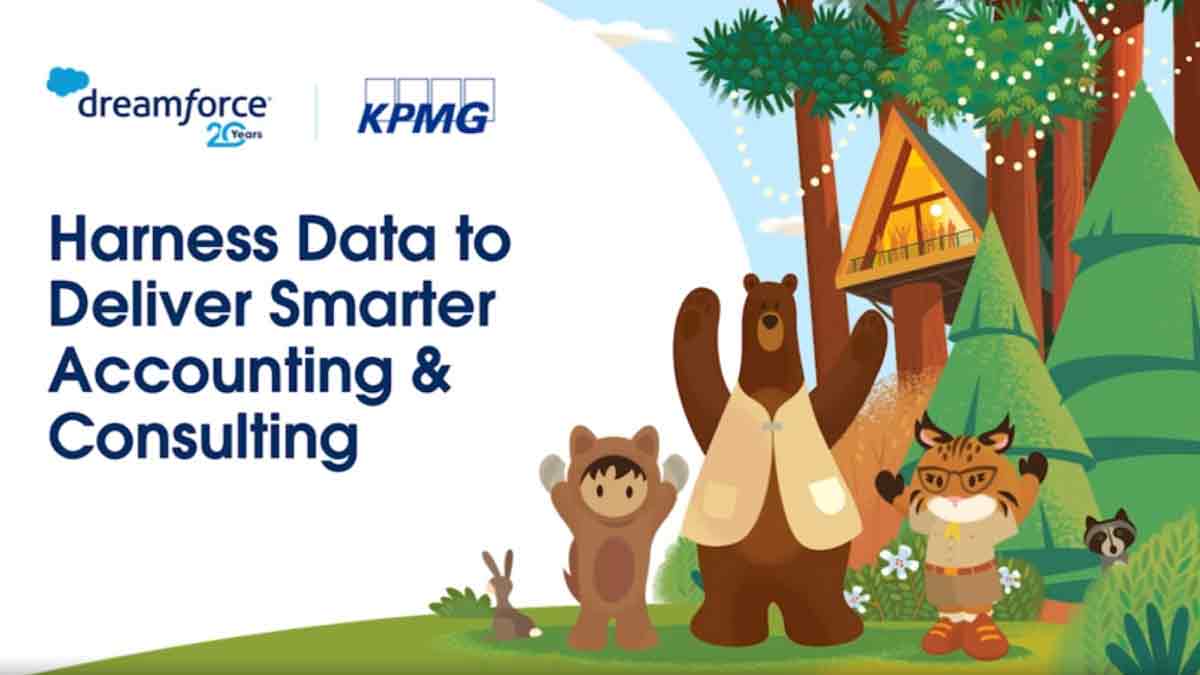Three Steps to Drive Efficient Growth for Consulting & Accounting
Reduce manual tasks, deliver white glove service, and give practitioners the superpowers they need.
May 18, 2023. 5 min read
Kristina Nissen
Senior Vice President, Sales - Professional Services, Salesforce
Consulting and Accounting firms are leaders in digital transformation – and clients are looking to them to help them navigate the bumpy economic times that seem to be unfolding.
But first, the industry is taking a hard look at the way it is conducting business. Since 2019, 88% of consulting and accounting firms say they’ve accelerated their digital transformation efforts versus 78% across other industries. Yet the service industry professionals know they can’t rest on their digital laurels. Client expectations keep rising and the way they work has grown more complex. To stay ahead of the curve, firms need to take three steps to trim costs, accelerate collaboration, and adapt to new working models.
1. Trim costs through streamlined and unified data and technology
Firms that centralize data into a single source of truth will find it easier to understand their clients so they can compete more effectively in a changing world.
Yes, that does sound a lot like the advice most of them give their clients every day. But now, partners need to take a hard look at costs even as clients are expecting new engagement models that are more personalized. As a result, 81% of business development professionals say they have had to adapt quickly to new ways of selling to juggle conflicting priorities.

At accounting giant KPMG, Richard Haskell, Director of Insights Enablement, said the firm built a comprehensive, unified record of client interactions to better understand clients. The records include everything from social campaigns, email, events, webcasts, meetings, or calls, to relationship development, opportunities, and outcomes.
“One of our main focus areas was to provide an end-to-end view of our client interactions in one place,” Haskell said in a session at Dreamforce 2022. “So, people can see across an entire account as they’re building a relationship, working with the client, and learning about them.”
Companies across multiple industries that invest in these kinds of tech upgrades say it pays off quickly: 89% say they achieve positive ROI in nine months and information technology (IT) costs drop 25%.
2. Accelerate efficiencies through automation and intelligence
Once you have your data centrally located, you can tap artificial intelligence (AI) to keep step with rising expectations efficiently.
KPMG has embedded AI-assisted marketing dashboards in a single firm-wide engagement platform. This enables their professionals to see what topics contacts have engaged, what materials they’ve seen or events they’ve attended, and through which channel. “The embedded dashboards generate the most excitement and practical use,” Haskell said. “Open the contact to create or prepare for a meeting, and you can see all this information right on the record, just a click away.”
With that kind of information, you can use AI to generate automated marketing campaigns that deliver the specific content any client prefers through the channels of choice.
With a single source of truth, you can also easily share information internally across practices - and in real-time. Plus, with a unified platform, partners with various sets of expertise may be able to spot cross-selling opportunities or supply needed expertise. For example, a client engaged in upgrading a system may not realize how it affects their workforce. A partner with a specialty in that area may be able to recommend fresh training ideas or improved workflows to the client. You can also avoid awkward conflicts when everyone has a 360-degree view of clients. “A lot of our accounts are very large, with a lot of services and big teams, so we make sure everybody can look across the entire relationship and avoid unpleasant surprises or redundant conversations,” said Haskell.
Most importantly, when the data is more accessible and intelligent, it enables partners to be more client-centered. “We use data to make the client feel like we get them, but it’s not just perception. We see where they've interacted and what they care about, and we do have a better understanding of what they need,” explained Haskell.
3. Adapt to new working models to deliver exceptional service
Smart firms should give their best practitioners the superpowers they need to work best in an evolving workplace.
Traditionally, firms have been driven by close client relationships, built in-person and onsite, in meetings and over shoulders. New remote and hybrid work models are upending that model. You need to think creatively about what it means to have a team meeting – especially now that clients may also be scattered. “Competitive advantage will accrue to companies with the ability to set new priorities and implement new processes quicker than their rivals,” McKinsey notes.
KPMG adopts a similar approach. According to Richard Haskell, the firm wants to surface insight at every point in the client-relationship development process. Toward that end, KPMG is already expanding its engagement environment to add more context and more insight, to make it easier for its best people to work together and deliver more client value.
“At first, we focused on dashboards, notifications, and connecting everything, but now people are demanding data in context, with workflows and prompts-to-action that turn insight into action,” Haskell said. “Reporting is important, but when you add context and AI-powered prompts, then you start to see more opportunities.”
AI can also help you understand your own workflows, the likely flow of future work and your staffing needs. This can help partners know when it’s time to hire or pullback – and also identify the right people for projects in flight and future ones.
Three steps closer to future proofing your business
As in many other industries, consulting and accounting firms are under pressure to do more with less. The economy is on uncertain footing and these firms need to show the way forward to doing more with less.
Across industries, firms that create a single source of truth to enable automation and intelligent insights see customer retention grow by 30% and employee productivity jump 26%. For success now, it’s the only way forward.








